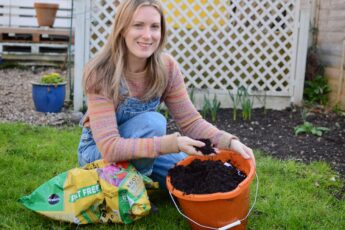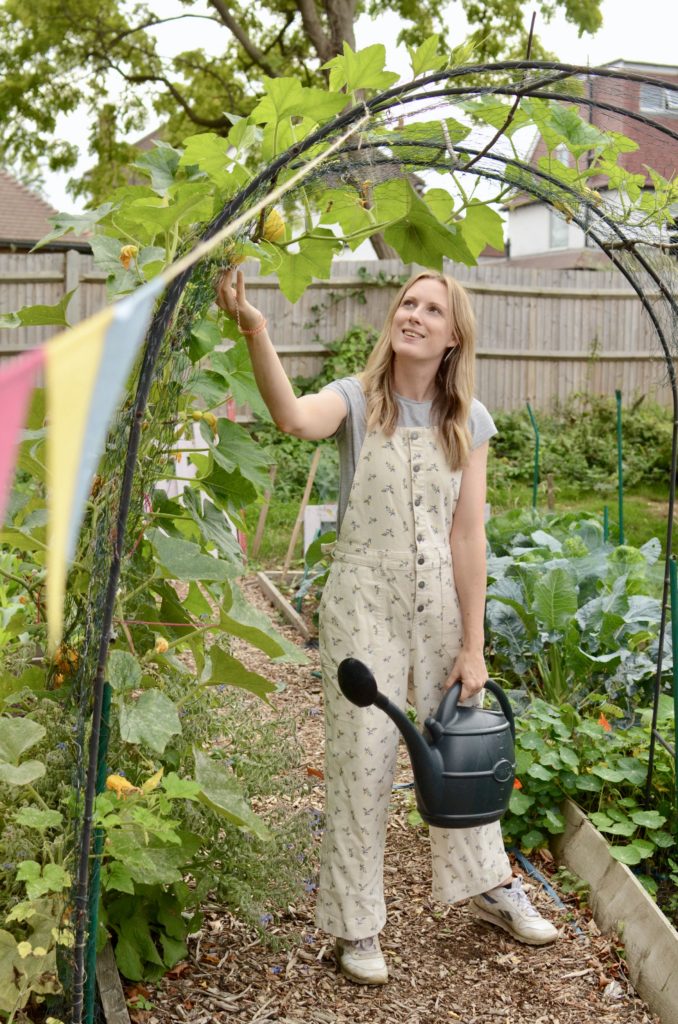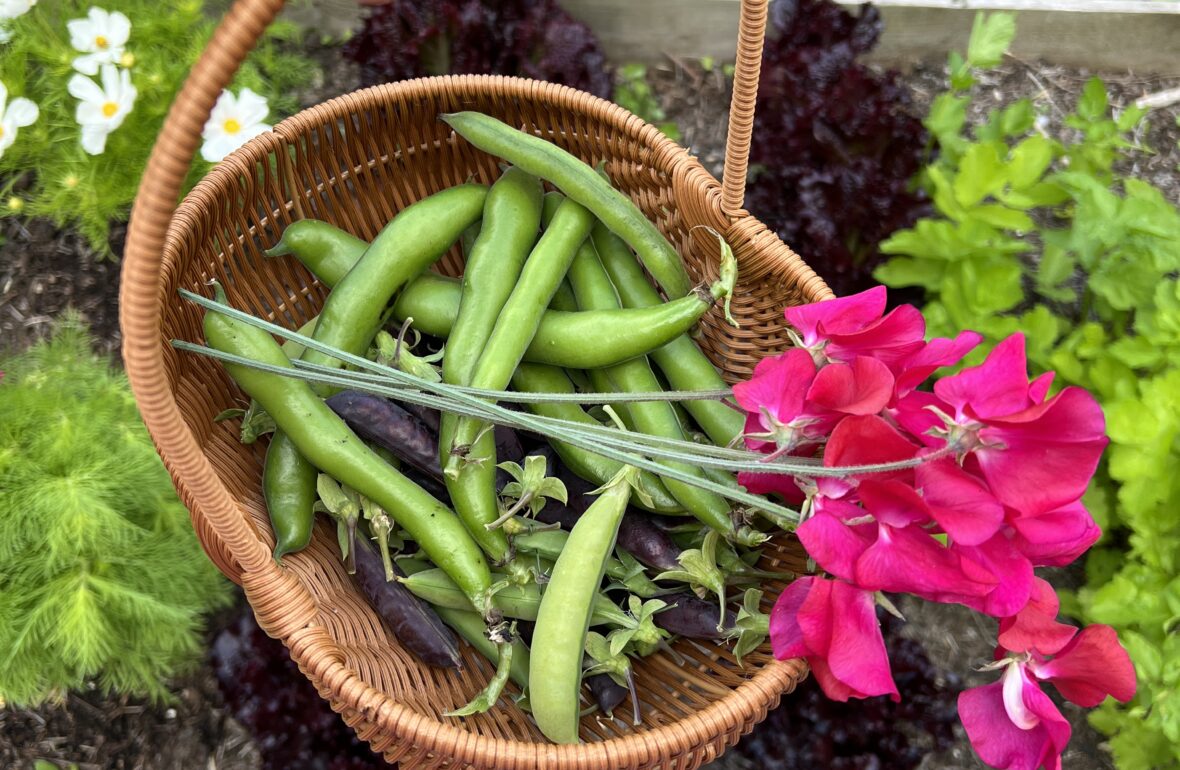
On my allotment plot, broad beans are always growing at some point! They are so delicious, so easy to grow and can withstand colder temperatures making them the perfect allotment crop. Broad beans are big plants that need supporting. They produce their beans from the central stem and are delicious in soups, stews and in casseroles.
You can cook broad beans in their pods by boiling for a few minutes and then de-podding into your chosen dish. It’s a lot less fiddly this way!
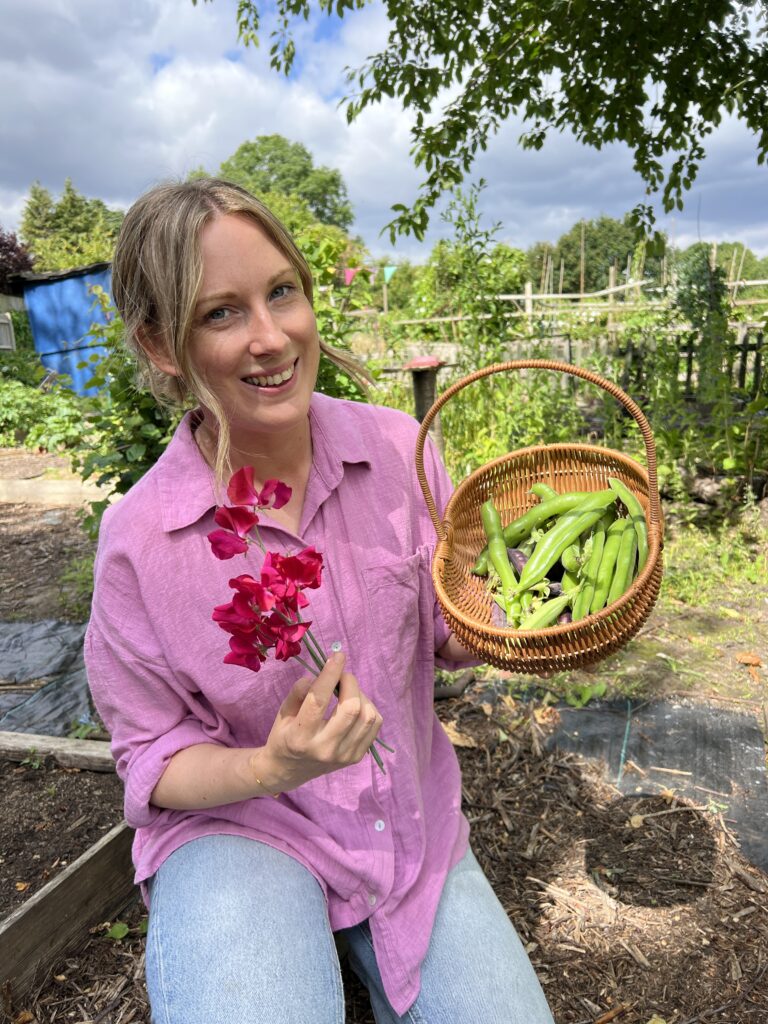
Growing them couldn’t be easier. They require a few things: a sheltered position with plenty of sun, a free draining bed with lots of goodness dug in and plenty of water (they get thirsty). Broad beans can be started directly over the Autumn time for an earlier crop, or you can start them in early spring. I like to succession sow mine in the Autumn and Spring to ensure a continuous crop for as long as possible!
There are a few different varieties of broad bean. Aquadulce is probably the best one to try if you want to direct sow them in the Autumn time as they are particularly hardy and can survive temperatures as low as -10!
HOW TO GROW BROAD BEANS IN AUTUMN
Start by finding a sheltered, large growing bed. Dig in or layer up with lots of organic material such as compost and manure. Broad beans are hungry plants and need lots of nutrients and water, but don’t like to sit in boggy conditions. So ensure it is free draining and in the sun.
Broad beans are best sown in a zig zag as it makes it easier to support the entire row. Just use your finger to make a hole a few inches deep. Space them out leaving about 45cm between each bean. The plants can get very big!
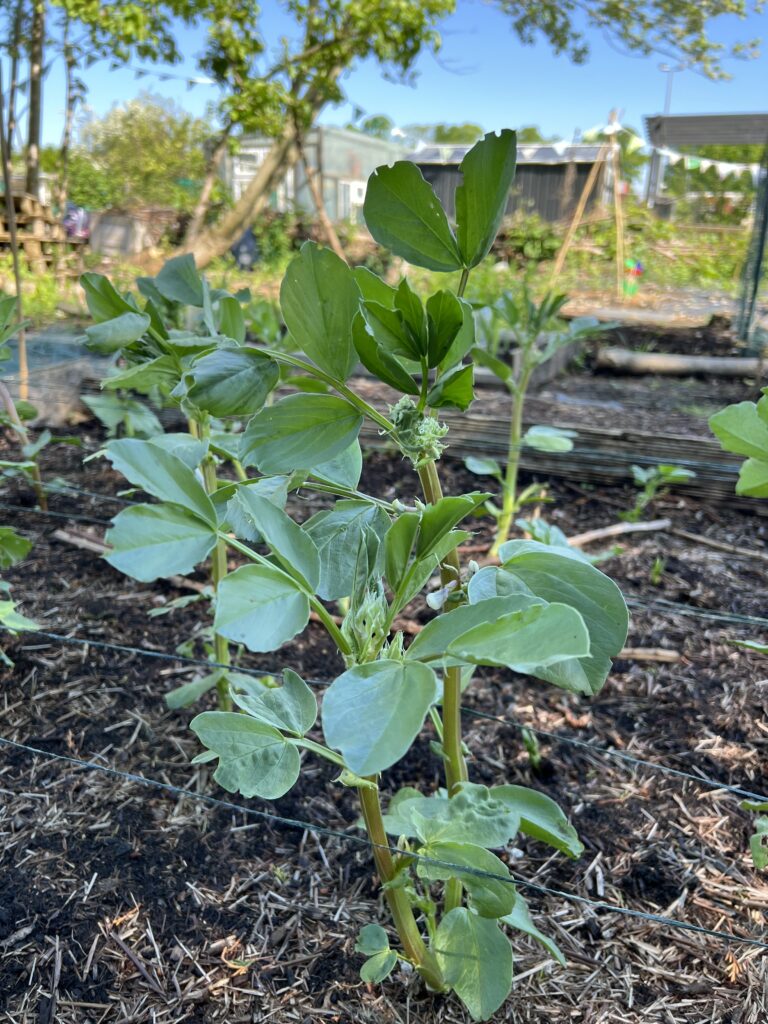
Water in well and keep watering regularly, even over the Autumn time. If they dry out, the won’t germinate!
You might need to protect from mice if your allotment is prone to them. You can throw over some chicken wire or peg down some netting to stop them from digging them all up! Once they get growing, slugs are the biggest enemy, so use barriers such as blackberry canes or crushed egg shells to protect against them.
One your broad bean plants grow a few feet tall, you’ll need to support them. They can easily fall over and snap in the wind, so it’s important to get the support in early. An easy way of doing this is to push in some canes either side of the plants and tie twine between them, supporting the entire row together.
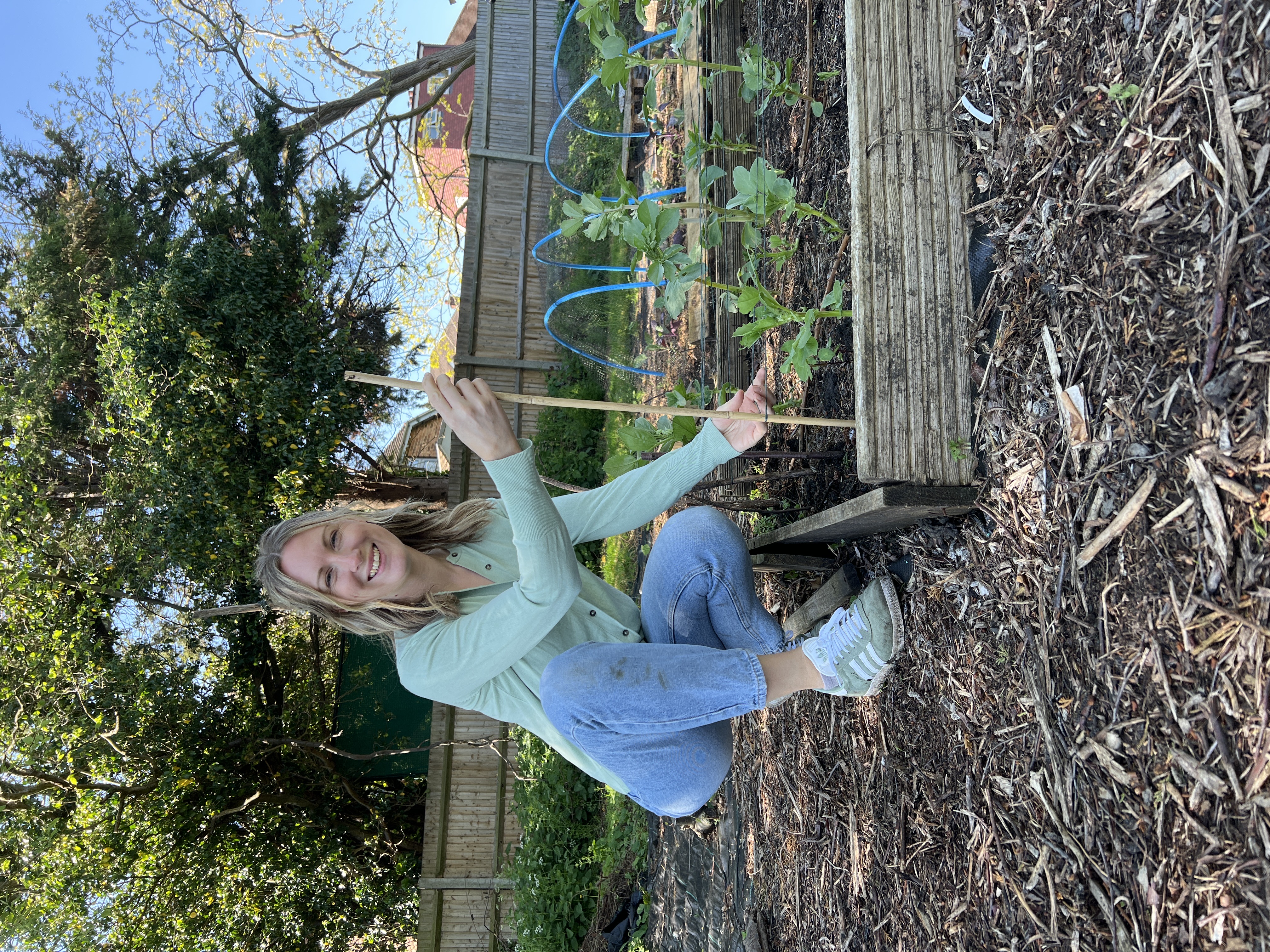
Black fly love broad beans. You can try pulling out the top flowering section to reduce their numbers, or you can just wait for the ladybird army to turn up and finish them off!
Once your broad beans are producing the beans, pick regularly. The more you pick, the more that will grow!
PROTECT YOUR BROAD BEANS
The main pests associated with broad beans are black fly and of course, our good garden friends the slugs!
Slugs are a complete mystery to me, they seem to be getting smarter every year. I use crushed shells, brambles and a few natural pellets if things get really bad.
If your entire crop gets eaten by slugs, I would suggest starting a new batch in pots and putting them into a cold frame to grow. You can plant them out once they get big and strong enough to be able to survive a bit of slug damage.
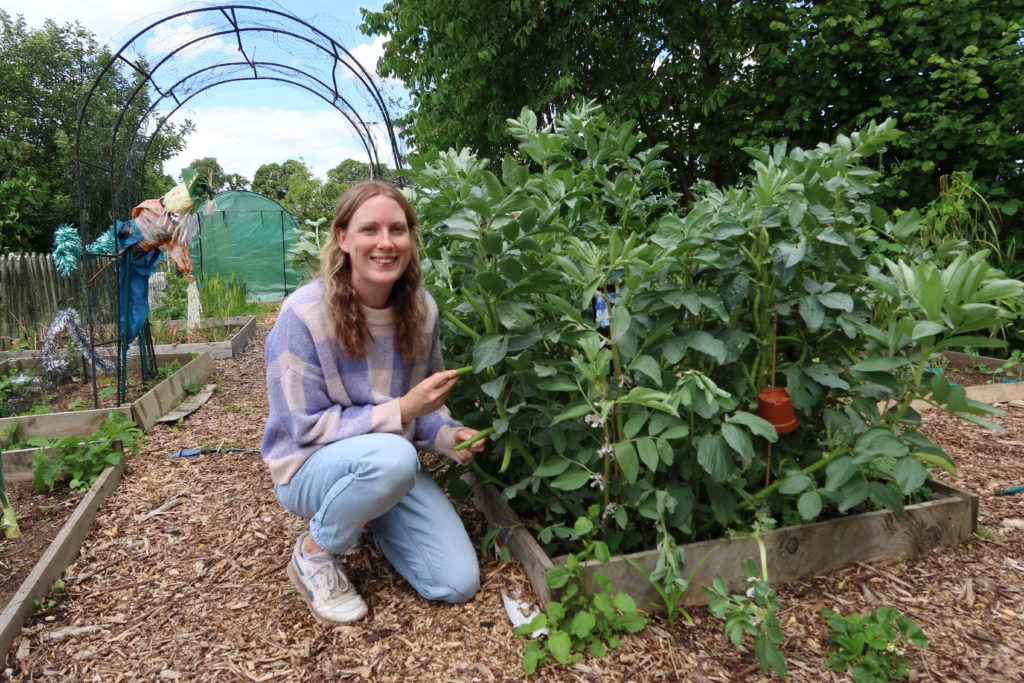
Black fly usually attacks broad beans later in the season. Try pinching the flowering top of the plant out if they cause too much damage as that’s where the majority of them congregate. Otherwise, jut wait for the lady birds to come, they usually sort them out. I find black fly rarely affect the actual beans so I tend to leave them to it now!
HARVESTING YOUR BROAD BEANS
Beans are ready to harvest once they are big and bulging! Pull them away from the stem in a downwards motion, tearing them away as cleanly as you can.
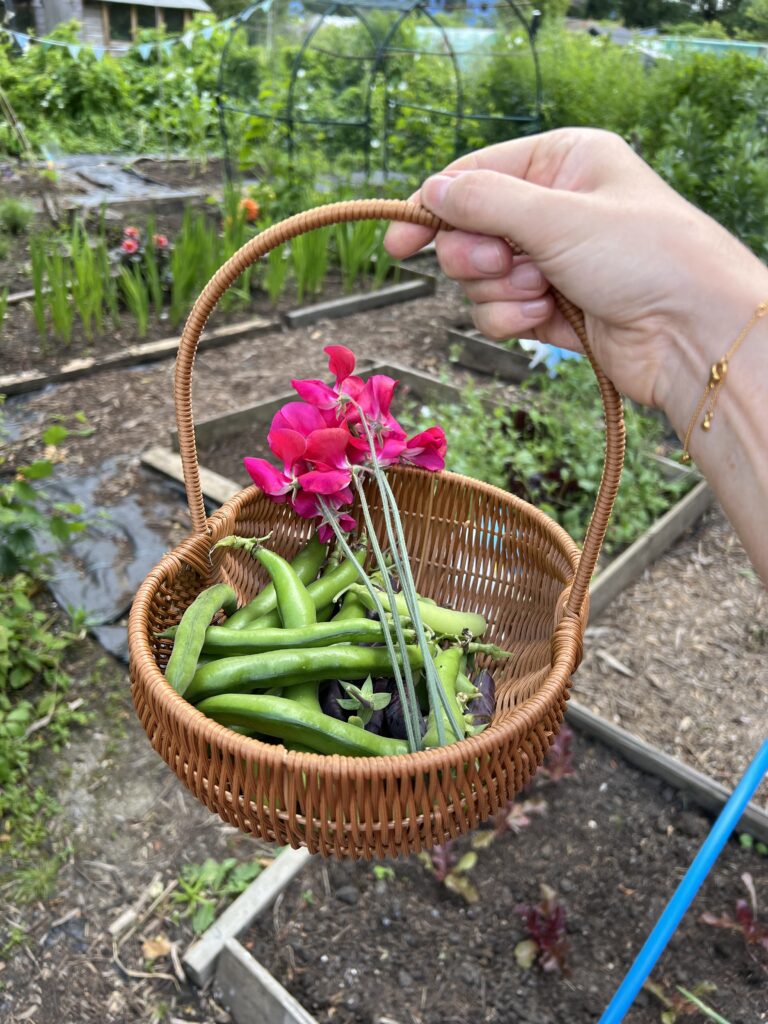
You can cook the beans straight away or store in the fridge until ready to use. They last about a week this way. If you freeze them, they will last much longer!
Shop broad beans and other fruit and veg seeds with One Garden voucher codes. Enjoy discounts on garden essentials and grow your own for less.
The more beans you pick, the more that will grow, so keep pulling them off and eating them!



